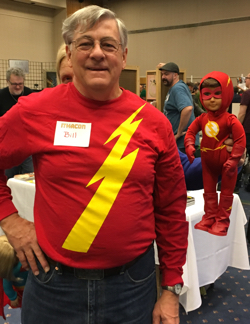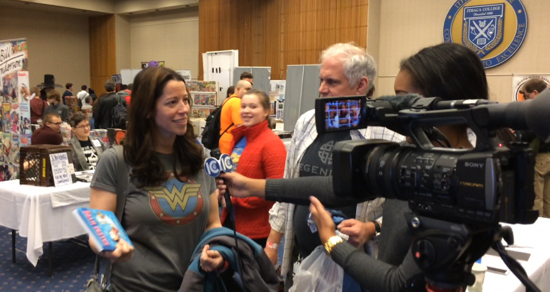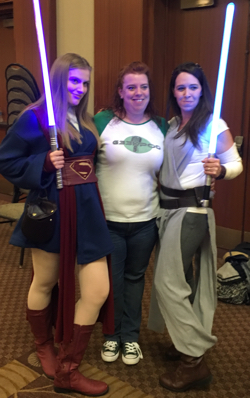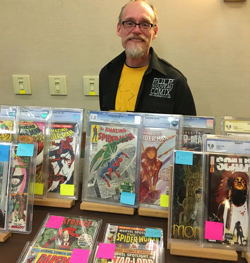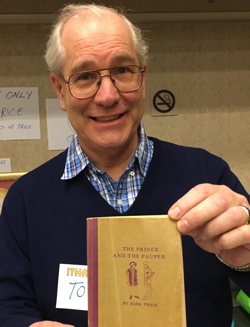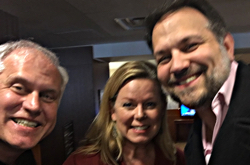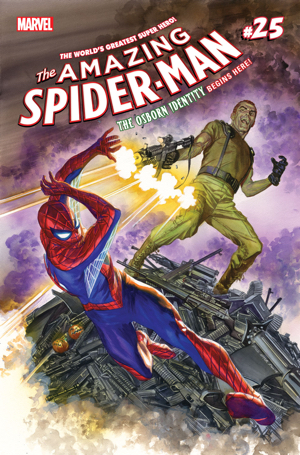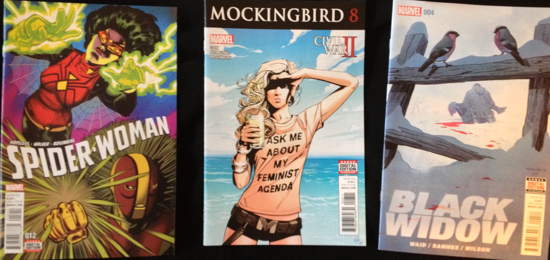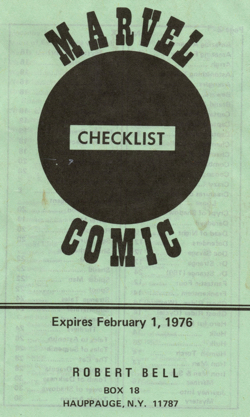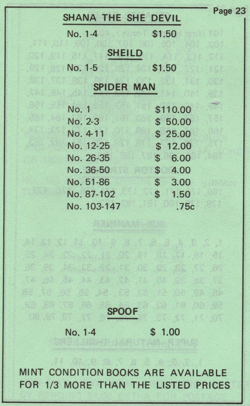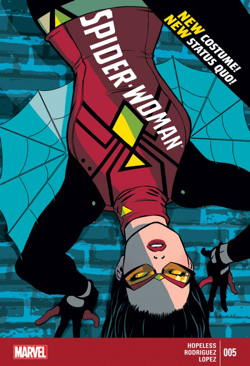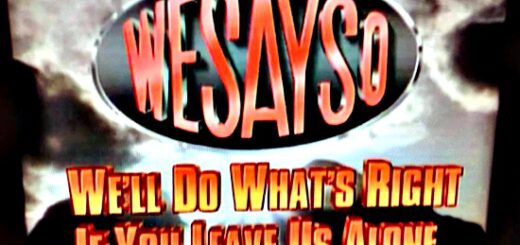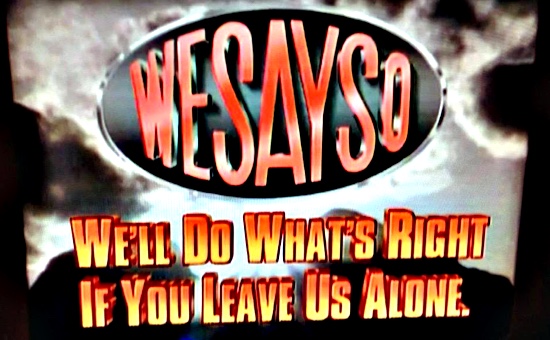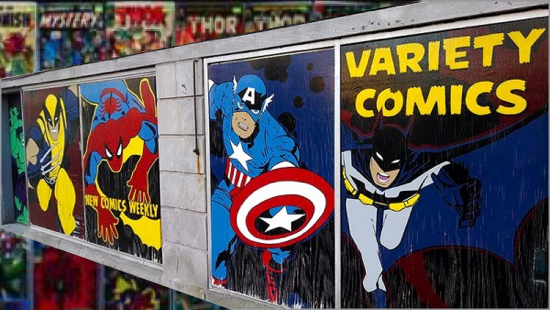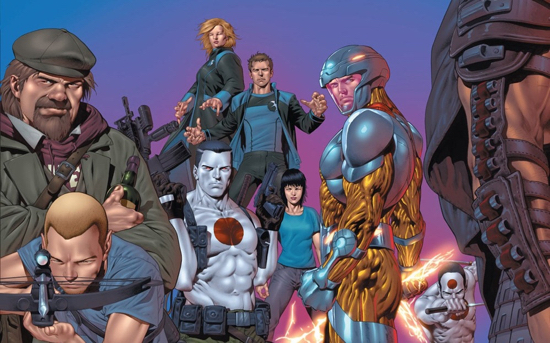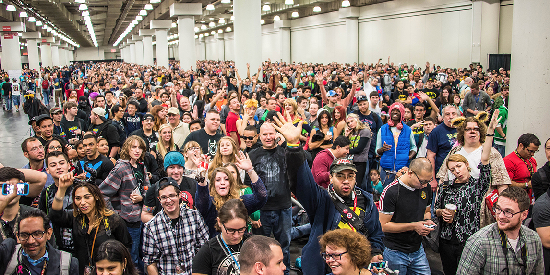Joe Corallo: Songs For The Dead
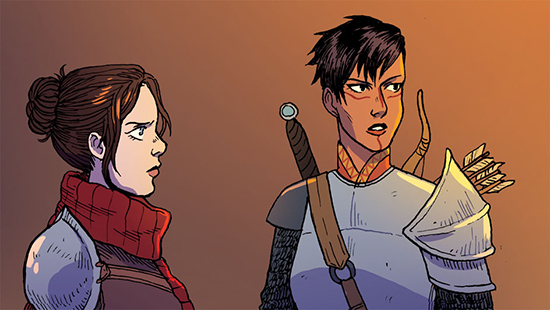
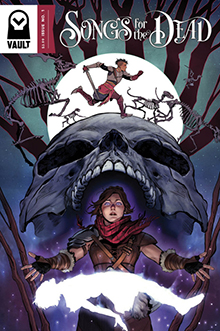 Many of you who are familiar with this column know I’ve been enjoying a new publisher this year quite a bit – Vault Comics. I’ve written about them and interviewed a couple of different creative teams on their books in the past few months or so. Although most of their output has been in science fiction they do have a new title, Songs For The Dead, in the fantasy genre hitting stores this winter. I got to interview the team of this new fantasy comic including Mike Heron, Andrea Fort and Sam Beck.
Many of you who are familiar with this column know I’ve been enjoying a new publisher this year quite a bit – Vault Comics. I’ve written about them and interviewed a couple of different creative teams on their books in the past few months or so. Although most of their output has been in science fiction they do have a new title, Songs For The Dead, in the fantasy genre hitting stores this winter. I got to interview the team of this new fantasy comic including Mike Heron, Andrea Fort and Sam Beck.
JC: Hey Mike, Andrea, and Sam! Thank you for taking the time to chat with me. First things first; what’s each of your elevator pitches for Songs For The Dead?
Mike: Songs for the Dead is the story of a young bard named Bethany, who just so happens to be a necromancer. She’s on a one-woman quest across a foreign land to prove to the world that necromancers are capable of more than creepy and evil things by helping others along the way!
Andrea: Songs for the Dead is the story of an optimistic young woman named Bethany who happens to be a necromancer. But Bethany believes that her power can be used for good, and she sets out to prove that necromancers aren’t all as evil as the stereotypes by trying to become a hero.
Sam: A really happy-go-lucky necromancer just wants to be the hero.
JC: So how did you all meet and decide to do this comic together?
Mike: Andrea and I met online a few years ago, and one of the things we really connected over was both being creative people. Despite having different backgrounds in our expertise, and having never made a comic book before, we felt like it was the best way to tell the story of Songs for the Dead. Sam we found after an exhaustive search for the right artist to compliment our story – we lucked out and found someone who is the perfect fit!
Andrea: As Mike mentioned, we met online and one of our many similarities was our love of storytelling. We had been discussing a collaboration of some kind when the idea for Songs for the Dead came up. We did some brainstorming, some world-building and then we went looking for an artist who could help us bring our vision to life, we are amazingly lucky to have found Sam!
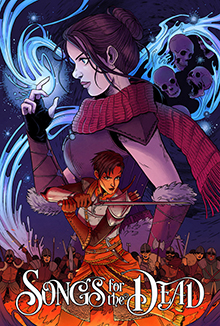 Sam: Andrea and Mike contacted me after finding me through deviantART of all places! We all live in the Greater Toronto Area so we’re able to meet up and talk through the comic in person which has been amazing. It really makes a difference in building a team.
Sam: Andrea and Mike contacted me after finding me through deviantART of all places! We all live in the Greater Toronto Area so we’re able to meet up and talk through the comic in person which has been amazing. It really makes a difference in building a team.
JC: Bethany is not what most people think of when they think of a necromancer. How did Bethany come to be? Has she changed must from her initial concept? And what other fantasy characters helped influence her creation?
Mike: The genesis of the idea is really just that: I had the idea for an unassuming necromancer some years ago, before Andrea and I had met. I play a lot of RPGs, and anything with a character creation system really lets my imagination run wild. I landed on this juxtaposition of this scary and forbidden magic in the hands of a bright-eyed and optimistic young girl. The idea persisted and soon I was making notes about it here and there while working on other projects.
Bethany’s concept and appearance have been surprisingly consistent over the years, and a lot of that I credit to Sam, who really just got what we were going for from the beginning.
Andrea: Mike had come up with the idea for Bethany a while back and told me about her when we were discussing possible collaborations. I think he had the idea while he was playing an RPG. I was really into the idea right away! I love subverting expectations and defying stereotypes, so I was thrilled to work on building and developing a character like Bethany who is so much more than she appears.
Sam: Like Mike said Bethany’s character has been pretty consistent, I think we nailed down her look almost on the very first test page. Which is really a testament to how well Mike defined her in just a few words. Her outfit is a bit haphazard which reflects on her style of adventuring.
JC: Speaking of influences, what fantasy worlds and stories either helped inspire this story or inspire any of you to want to tell a fantasy story?
Mike: Well as I mentioned, Andrea and I are huge RPG fans. We’re also huge fantasy fans, so there’s really a mix of everything in there! Some Elder Scrolls, some D&D, some Dragon Age, some Witcher, some LOTR – we really tried to take inspiration from the best.
Andrea: I think all three of us really love genre, and especially fantasy stories. I am personally a massive fan of Tolkien’s writing and I think that informs a lot of my contribution to Songs. I also love the Dragon Age franchise and the way you discover lore throughout the narrative.
Sam: We’re all pretty big RPG fans, so my influences overlap with the rest of the team quite a bit. I also read a lot of historical fiction which has helped me stay in the right mindset for this kind of fantasy story. I strive to make characters and backgrounds feel like part of a larger world, beyond what’s shown in a framed panel.
JC: Elissar plays the role of the brash brawler. Being that there are quite a few fantasy archetype characters while having just a couple of protagonists to start, what made you all decide Elissar would be a fighter rather than a ranger, rogue, paladin, etc?
Mike: That’s an interesting question! I’d say Elissar’s class is really informed by her personality. Elissar was actually a somewhat late addition to the story, as the original drafts of Songs for the Dead were more about Bethany being this lone wanderer. Andrea and I decided eventually that Bethany needed a companion, who was also a bit of a foil for her, something to balance out her overwhelming optimism. So when we started fleshing out who Elissar was and what she needed to be, her role as a Fighter just kinda fell into place.
Andrea: I love this question! And I love talking about Elissar! As Mike said, we decided that Bethany needed a companion. We wanted readers not only to have a different perspective of the world, but also someone whose personality would push Bethany’s personal growth. I really wanted to see Bethany’s upstanding morality challenged by someone who was much colder and more calculating, I wanted someone who was morally ambiguous. As we were developing that character, she naturally took the form of a fighter. Besides, Elissar’s eagerness to draw her sword is very useful in adding corpses for Bethany to raise to the story!
Sam: I always felt that Elissar was a big mash-up of a lot of archetypes; fighter, rogue, mercenary. I remember when I was coming up with a character design her armour matched, and the first piece of feedback was to mix it up. She’s not put together at all, that’s what makes her really fun and surprising.
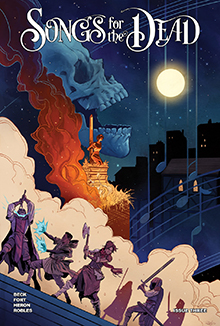 JC: Songs For The Dead started out as a web comic. Why did you all feel that was the best place to start?
JC: Songs For The Dead started out as a web comic. Why did you all feel that was the best place to start?
Mike: We didn’t, actually! Songs made its original debut in print and through digital release via comiXology.
Andrea: Songs for the Dead was released on comiXology, and then in print shortly after. Because of how limited our resources were, those original print versions are very scarce, but they’re out there! We wanted to get our book onto comiXology early on because we had so few resources that we really didn’t know how else to get our book to people. We believed in it, and we wanted people to hopefully read it and love the characters and world the way we do, so a huge online distributor like comiXology just made the most sense.
JC: Ah, sorry! I was conflating an online indie comics presence with web comics. I would like to ask you though, the web comic scene in general seems way more receptive to fantasy comics in general compared to the traditional floppy market. Why do you all think that is?
Mike: I find that fantasy comics, especially those released in print, tend to fall into certain traps that can alienate readers fairly quickly. Lots of lore dumps and didactic panels. Andrea and I consciously tried to avoid this when we started writing Songs, we really wanted the comic to focus more on the characters and show you what they’re all about. We actually have quite the extensive lore written up behind-the-scenes, but our plan is to slowly release it through the story.
Andrea: That’s a good question, and one I ask myself frequently. I wish I really knew why. I know that I personally sometimes shy away from fantasy stories because I worry that they’ll be derivative. There are so many great stories, but they can feel too much like the great fantasies that have come before. I really like to see big new ideas and I like to feel challenged by what I read. All of the fantasy webcomics I’ve seen online have been hugely original and I’m sure other readers respond to that, the same way I have.
Sam: Webcomics are a lot more willing to take risks; and fantasy as a genre is so flexible that it’s the perfect platform to take those risks in. There are so many strange and interesting permutations of fantasy and I’m so glad there are creators who want to explore that.
JC: Your comic was picked up by Vault Comics. First off, congrats! Secondly, why is Vault the perfect home for Songs For The Dead?
Mike: Thank you! Honestly, we love everything about Vault Comics. Their catalog to date has been ambitious and engaging. They’ve really made it clear that they care about the artists and their projects, and they’re finding new and exciting ways to get people interested. Ambition was a huge consideration for us when we were considering publishers; Songs was a hugely ambitious endeavour for us that saw us taking some pretty crazy risks in the interest of getting more eyes on our book. We needed someone to match that, and we’re confident we’ve found that in Vault.
Andrea: Thank you! We couldn’t be more excited that Songs for the Dead has found a home at Vault! We love Vault because they love comics as much as we do. They also celebrate new and exciting stories, the way we do. It’s an honour to be included in their catalogue. We took a lot of risks trying to tell this story, we were looking for a publisher who would was as dedicated as we are and the team at Vault is the best.
JC: As someone who’s done a few creator owned comics in the past I understand how sometimes when you hit your stride it’s tempting to look back and think what you may have done differently. Is there anything any of you either may have done differently early on with Songs For The Dead or anything that you decided not to do and are glad you stuck with your instincts?
Mike: Oh yeah, there’s tons. In terms of production, there’s a lot of missteps Andrea and I took when we got started, being new to the business and all. At first, we were really eager to get started, and we were even close on a couple of occasions when our artists fell through. It’s funny to think how bummed we were at the time, but in retrospect it was absolutely for the best. Not only for finding Sam, but for the fine tuning we did on the script that made all the difference in the final product.
Andrea: Looking back to when we started, I see so many little things that could change, and so many times we could have simplified our process. When we started, Mike and I had never worked with comics or this kind or storytelling before, we learned as we went. It was intimidating and tough, but to come out with something like Songs was really rewarding. There were a lot of hiccups and I think we chose the hard way a few times, but every bump in the road helped us learn. I wouldn’t change things, simply because the more we struggle the better we’re getting. Plus, we are yet to make the same mistake twice (knock on wood).
Sam: Ask any artist if they can change something in their old work and they will say yes! I had really just entered the comic scene when I started working on Songs for the Dead, so I’ve grown a lot as an artist since then. It’s nice to reflect on where you’ve come from and apply what you’ve learned to future work.
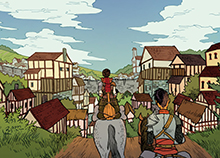 JC: Before we wrap this up, is there anything else anyone would like to add?
JC: Before we wrap this up, is there anything else anyone would like to add?
Mike: Probably just to say thank you again to everyone who has supported Songs thus far. As lifelong creative people and newbies to the industry, I really can’t tell you what it’s meant seeing people excited about our book and these characters. Moving forward with Vault we’re really excited about the future, and whether you’re new to Songs or are anxiously awaiting the next part of the story, we hope you’ll come along for the ride.
Andrea: I take every opportunity I have to say thank you. Thank you to our amazing team including Nick Robles, Deron Bennett and AndWorld Design, Tess Fowler and Tamra Bonvillain, as well as Vault for believing in us. Of course, to our friends and families who don’t see us as often because we eat, sleep and live all things Songs for the Dead. Thank you to all these incredible people for putting up with Mike and I. Songs wouldn’t exist without them.
Sam: I’m really thankful that Andrea and Mike took a chance with me as their artist. I was really green when I started and they trusted me with their comic-children! I’m so excited to see where Songs for the Dead goes.
JC: Thank you all so much for your time! Where can people find more information on Songs For The Dead and when can they get copies from Vault Comics?
Mike: You can follow all of our social media, on Twitter, Instagram and Facebook at @songscomic, or check out our website at songsforthedead.com! Songs for the Dead relaunches in January 2018, but you can pre-order at your local comic shop NOW – and you totally should!!
Andrea: We’re on Facebook, Twitter and Instagram as @songscomic, and our website is songsforthedead.com. Book one launches on January 31st, 2018 under Vault Comics so make sure you pre-order it now!

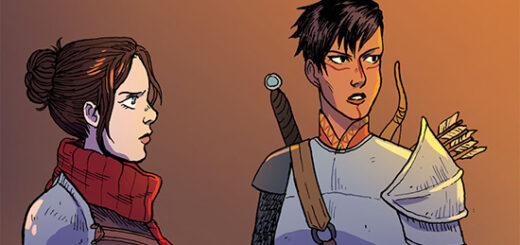
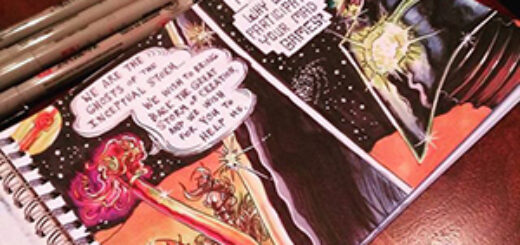




 Where Electricity Is Her Element could improve on is having clear stakes, a comment that also applies to The Showdown Volume 2. While this comic is gorgeous and worth it simply for the visuals, it’s hard to feel like there are any serious stakes. What happens if they don’t stop order? This is unclear to me. The plot itself isn’t as imaginative in execution as it is in concept and design. This leads to a linear, typical, and ultimately predictable plot structure. Without giving away spoilers, there is a point where we get an exposition dump that I feel would have worked better being eased into the story or at least foreshadowed earlier on.
Where Electricity Is Her Element could improve on is having clear stakes, a comment that also applies to The Showdown Volume 2. While this comic is gorgeous and worth it simply for the visuals, it’s hard to feel like there are any serious stakes. What happens if they don’t stop order? This is unclear to me. The plot itself isn’t as imaginative in execution as it is in concept and design. This leads to a linear, typical, and ultimately predictable plot structure. Without giving away spoilers, there is a point where we get an exposition dump that I feel would have worked better being eased into the story or at least foreshadowed earlier on.